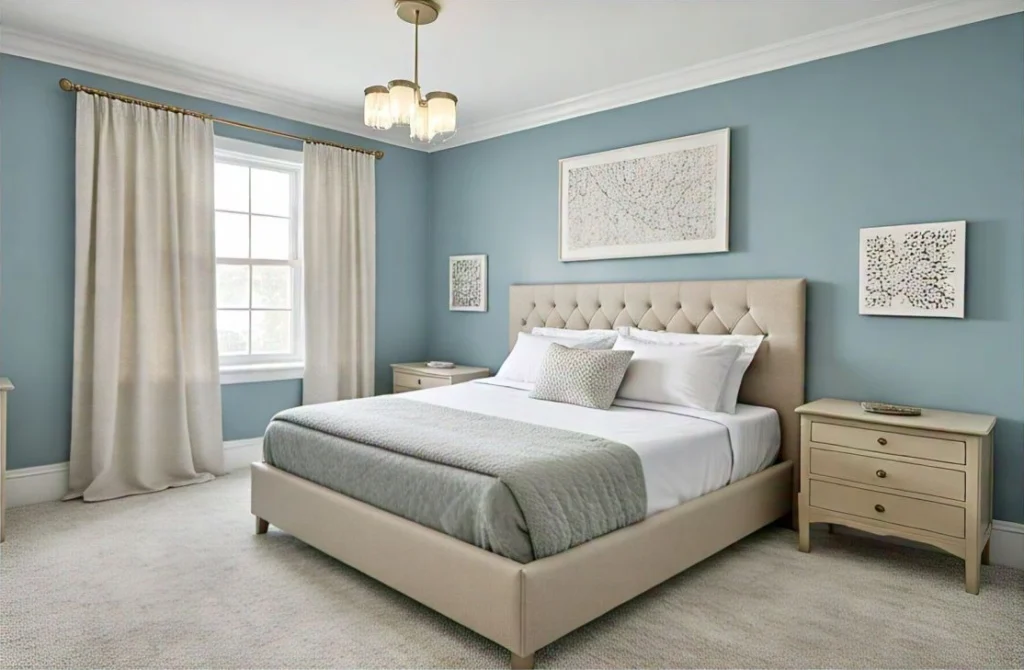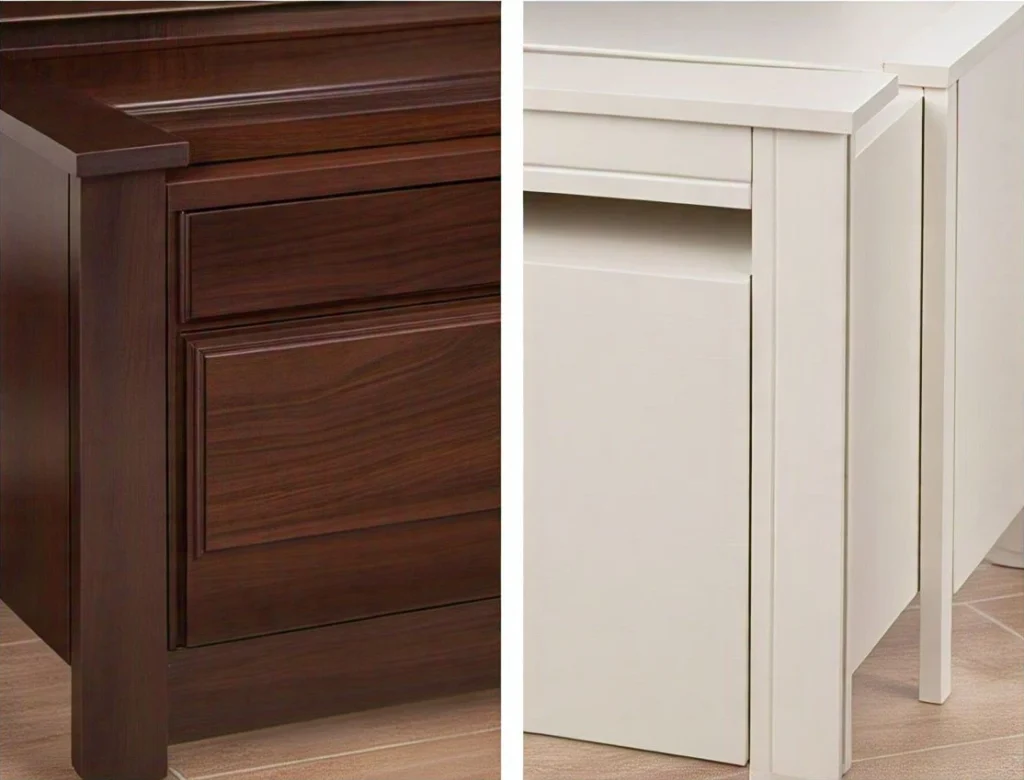Creating a restful and aesthetically pleasing bedroom requires careful thought, as it is a sanctuary for relaxation, intimacy, and quality sleep. The colors you choose for your bedroom significantly influence its ambiance, reflecting both your style and the functional purpose of the space. Unlike other rooms in the house, such as the kitchen or living room, where the focus may be on energy, social interaction, or functionality, bedroom color schemes are about creating a haven of calmness and serenity.
This guide explores the essentials of choosing the right bedroom color scheme, delving into the science of colors, design techniques, and practical tips for creating the perfect palette that resonates with your taste while fulfilling the room’s functional needs.
Table of Contents
Understanding Color Characteristics in Interior Design
Before selecting specific shades and combinations for your bedroom, it’s vital to understand the fundamentals of color theory. The characteristics of colors and their combinations form the backbone of interior design, influencing the mood and utility of a space.

Primary, Secondary, and Tertiary Colors
Colors can be classified into three main categories:
- Primary Colors: These include red, blue, and yellow. They are the foundational colors from which other shades are derived.
- Secondary Colors: Created by mixing two primary colors, secondary hues include purple (red + blue), green (yellow + blue), and orange (yellow + red).
- Tertiary Colors: These are formed by mixing primary and secondary colors in varying proportions, resulting in shades like teal, amber, and magenta.
Color Temperature
Colors are also categorized by their temperature, which affects how they make a room feel:
- Warm Colors: Shades such as red, orange, and yellow evoke a sense of warmth and coziness. They are ideal for creating an intimate ambiance.
- Cool Colors: Hues like blue, green, and turquoise are calming and tranquil, making them popular bedroom choices.
- Neutral Colors: These include shades like white, beige, and grey. Neutral tones provide versatility and act as a calming background.
The Psychology of Bedroom Colors
Colors impact our emotions and behaviors. Scientific studies suggest that certain shades are better suited to bedrooms because of their calming effects on the brain. For example:
- Blue: Known for its calming properties, blue is the top choice for promoting restful sleep.
- Green: Associated with nature, green fosters relaxation and harmony.
- Yellow: Soft shades of yellow create a cheerful and cozy atmosphere without being too stimulating.
- Grey: A versatile neutral that exudes calmness and sophistication, grey works well as a base color.
Avoid overly vibrant or high-energy colors like bright reds and purples in the bedroom, as they can be too stimulating and hinder relaxation.
Techniques for Choosing Bedroom Color Schemes
To create a harmonious bedroom that aligns with your style and preferences, consider these color scheme strategies:

1. Monochromatic
Using a single color in various shades creates a clean and minimalist look. For example, different tones of blue can produce a serene and cohesive design.
2. Complementary
Pairing colors opposite each other on the color wheel, such as blue and orange, adds vibrancy and contrast. This scheme works best when one color is dominant and the other acts as an accent.
3. Analogous
Combining colors adjacent to each other on the color wheel, like blue, teal, and green, results in a harmonious and soothing palette.
4. Split-Complementary
Instead of pairing two direct opposites, this scheme combines one primary color with two complementary shades on either side of its opposite. For example, blue with orange-red and orange-yellow offers a balanced yet dynamic look.
5 Tips for Choosing Bedroom Colors
Here are 5 tips to help you choose and implement the best colors for your bedroom:
1. Follow Your Personal Taste
Your bedroom should reflect your personality and preferences. While design principles offer guidance, it’s essential to prioritize colors you love. Experiment with mood boards to visualize combinations before committing.
2. Opt for Restful Tones
Focus on muted, soft tones that promote relaxation. For instance, pastel shades of blue, green, or peach can create a calming effect. Avoid overly bright or dark colors, as they may feel oppressive.
3. Incorporate Pastel Shades
Pastel colors, such as dusty pink, powder blue, or sage green, are perfect for bedrooms as they are understated yet inviting. They enhance the space without overwhelming it.
4. Maintain Balance
Achieve harmony by ensuring that the walls, furniture, and decor complement one another. Incorporate brighter accents through accessories like throw pillows or artwork, but keep the overall palette balanced and subdued.
5. When in Doubt, Go Neutral
Neutral shades like beige, white, and grey are timeless and versatile. They work well as a foundation and can be paired with various accent colors for added character.
How Furniture Influences Color Choices
The furniture in your bedroom plays a crucial role in determining the color scheme of the space.
Dark Furniture
If your bedroom features dark furniture, balance it with lighter wall colors like beige, dove grey, or pastel hues to create contrast and brighten the room.
Light Furniture
Light furniture provides more flexibility with wall colors. You can experiment with both neutral tones and muted bright shades. For example, teal walls paired with white furniture create a modern and fresh look.

Color Ideas Based on Design Style
The design style of your bedroom also influences color choices:
- Minimalist: Stick to monochromatic or neutral palettes with clean lines and minimal contrast.
- Classic: Opt for soft, warm tones like beige, ivory, or muted gold to create a timeless feel.
- Bohemian: Incorporate earthy tones like terracotta, olive green, and mustard, complemented by rich textures.
- Contemporary: Experiment with bold accent colors paired with neutral bases for a modern vibe.
Final Thoughts on Choosing Bedroom Colors
Selecting the right color scheme for your bedroom is a blend of science, art, and personal preference. By understanding color theory, considering psychological effects, and incorporating practical design techniques, you can create a bedroom that is both visually appealing and conducive to restful sleep.
Let your bedroom colors reflect your style and create a sanctuary where you can truly relax. Start experimenting with palettes today and transform your space into a haven of comfort and elegance.
FAQs
What is the best color for a bedroom?
Blue is often considered the best bedroom color due to its calming and restful properties. However, the best color for your space depends on your preferences and the mood you wish to create.
Can I use bright colors in a bedroom?
While bright colors can add energy, they are not ideal for bedrooms as they may disrupt relaxation and sleep. If you prefer vibrant shades, use them as accents rather than dominant colors.
How can I make a small bedroom look larger with color?
Light colors, such as white, beige, and pastels, can make a small bedroom appear larger by reflecting more light and creating an airy feel.
Are neutral colors boring for a bedroom?
Not at all. Neutral colors provide a versatile canvas for layering textures and introducing pops of color through furniture, artwork, and textiles.
How do I match wall colors with furniture?
To achieve harmony, consider the tone of your furniture. Pair dark furniture with lighter wall colors for contrast and light furniture with pastel or neutral tones for balance.

Comments